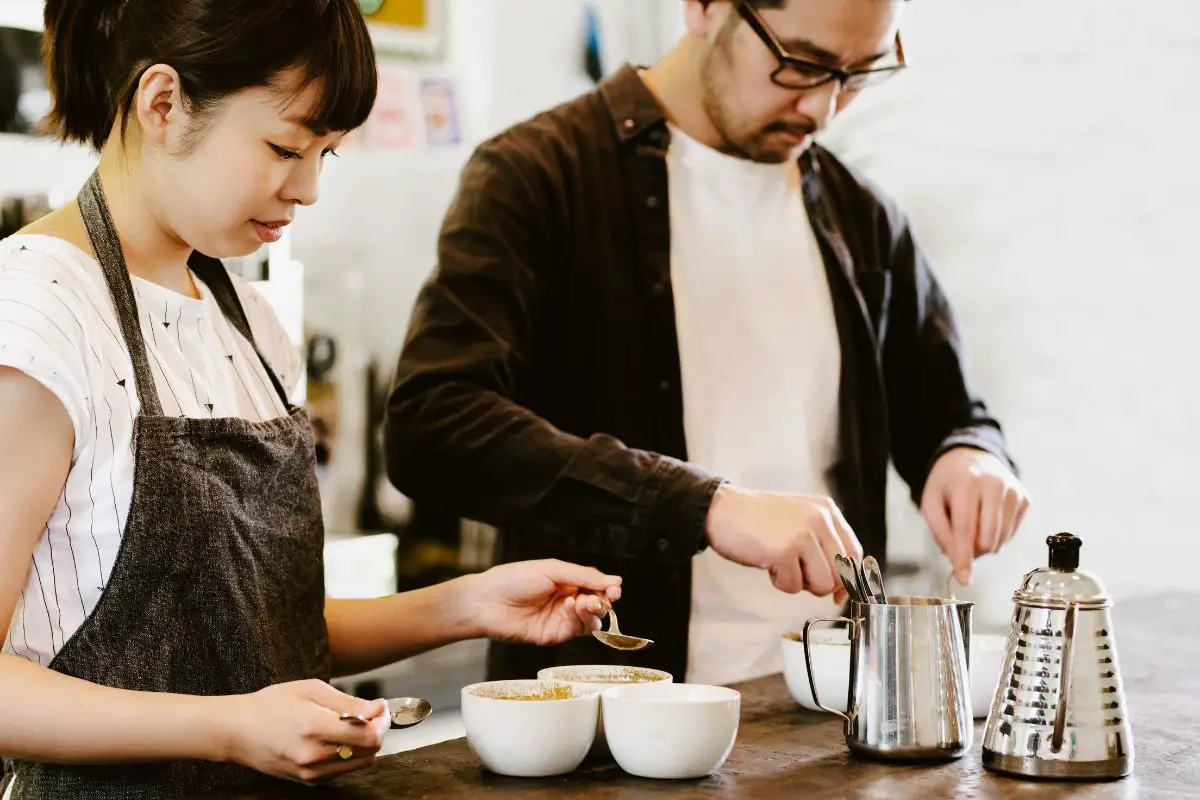Japan is among the countries where other cultures come into play before coffee. Regardless, Japan has a vibrant coffee culture. In fact, many coffee lovers from all corners of the world visit Japan to experience its coffee culture.

The History behind Japanese Coffee
During the “sakoku” national isolation policy, Japan secluded itself such that they didn’t relate or do business with other countries in the world. The isolation policy lasted for 200 years, between 1638 and 1858. During “sakoku”, traders, especially foreign ones, were limited to the kind of merchandise they’d buy and sell. European merchants would only enjoy coffee in Nagasaki. Actually, it’s believed that coffee was introduced to Nagasaki by Turkish merchants.
At first, the Japanese didn’t receive coffee well. They found it bitter and didn’t enjoy consuming it. Once the country transited to the “Meiji Renovation” period, also known as Meiji Restoration, Renewal, or Revolution from 1868, the Japanese started taking part in coffee trade.
Once the country went back to trading with other nations, the importation of coffee started picking and eventually reached most regions across the country. The first-ever coffee shop in Japan, known as a “kissaten”, was opened in its capital Tokyo in 1888. Before then, the country only had tea houses known as “chaya”. Japan experienced good business from coffee for decades. However, the Second World War damaged the country’s coffee trade considerably.
Fortunately, its coffee culture regained popularity after 1960. By this time, the Japanese started finding it fashionable to consume coffee. Consequently, coffee drinking started booming countrywide. Its coffee culture still exists to date. Although Japan is not among the top coffee producers in the world, it’s a notable coffee importer. They import coffee from top coffee producers like Kenya, Thailand, and Guatemala.
Coffee Shops in Japan
Early coffee houses in Japan tried hard to distinguish themselves from tea houses. They mainly offered coffee and black tea, with leisure provisions like newspapers and tobacco. Such leisure provisions created an environment that encouraged visitors to stay longer. The décor in the coffee houses featured art deco styles for a modern look.
The flashy décor trend has stuck around in larger Japanese cities. Modern-day coffee shops in Japan feature a simple décor with popping colors and clean lines.
Many Japanese coffee shops that offer specialty coffee prepare it with freshly ground coffee on order. Today’s “kissatens” (Japanese tearooms that also serve coffee) feature electrifying décor.
Recipe for Making Kyoto Cold Brew
You’ll need to apply some chemistry skills to prepare Kyoto cold brew and many other Japanese coffees. Kyoto-style cold brew uses a unique cold brewing method. Although it’s similar to Japanese-style iced coffee, they’re different coffee brews. Kyoto cold brew is believed to taste better than immersion cold brew, which is the traditional method of making cold brew. Kyoto cold brew uses a consistent and slow brewing process. Thus, the process captures subtleties of coffee flavor that other cold brew methods fail to capture.
Here’s a recipe for making Kyoto cold brew using a Yama Tower:
Supplies needed:
- Water
- Ice
- 8-ounce medium grind coffee
- Yama Tower (cold brew coffee tower)
Instructions:
Step 1– Insert a coffee filter into the cylinder. The filter should be well-positioned at the bottom.
Step 2– Add medium ground coffee (8 ounces) to the cylinder. Ensure the coffee covers the bottom section of the cylinder evenly.
Step 3– Place a coffee filter over the grounds.
Step 4– Load the cylinder with water and ice.
Step 5– Saturate the grounds evenly with about 6 to 7 ounces (13 ½ tablespoons) of water.
Step 6– Set the drip rate of the tower to exactly 40 drips per minute, which is the equivalent of 1 drip per 1 ½ second. Ensure you check the drip rate to ensure it’s consistent once every 1 ½ hour and adjust the drip rate as needed.
Step 7– Allow the coffee to brew for approximately 11 ½ hours (or exactly 11 hours 48 minutes).
Step 8– You can now serve the cold brew.
Extra Brewing Tips
- Ensure you adjust the drip rate every 1 to 2 hours just in case it’s altered during brewing.
- Allow the coffee to bloom by giving it enough time.
- The best coffee for this drip method is a light roast with a bright flavor profile.
- Ensure all the components of the tower are thoroughly clean. They should be aligned and secured properly in place.
Related Articles